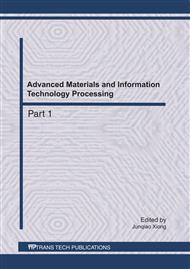p.1160
p.1164
p.1168
p.1177
p.1185
p.1189
p.1193
p.1198
p.1203
Research on a Design Framework for Blended Learning
Abstract:
This paper proposes a framework for the design of blended learning that consists of three key considerations: what to blend, how to blend and effects of blending. “Blending (what to blend)” involves four aspects: the blending of traditional classroom-based, e-learning and real learning contexts, the integration of various learning resources (contents, tools and social support), the combination of formal and informal learning, and the convergence of different learning methods (individual, group, class-based collective learning).
Info:
Periodical:
Pages:
1185-1188
Citation:
Online since:
July 2011
Authors:
Keywords:
Price:
Сopyright:
© 2011 Trans Tech Publications Ltd. All Rights Reserved
Share:
Citation:


